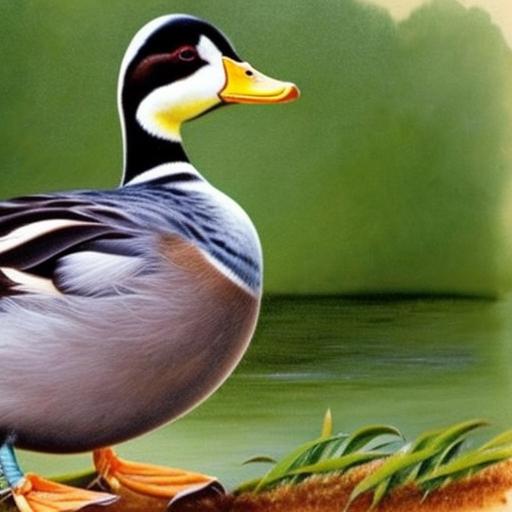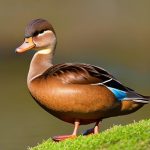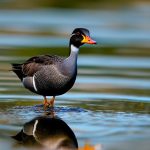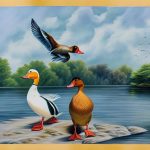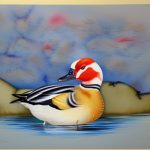Raising ducks as a 4H project can be a rewarding and educational experience for young enthusiasts. 4H is a youth development program that aims to empower young people with the skills they need to succeed in life. One of the popular projects within 4H is raising and showing ducks. There are several breeds of ducks that are well-suited for 4H projects, each with its own unique characteristics and traits. In this article, we will explore some of the most popular 4H duck breeds, their characteristics, care and maintenance, training and showing, as well as the benefits of raising them. Whether you are a 4H member looking to start a duck project or a parent or leader seeking information on 4H duck breeds, this article will provide you with valuable insights and resources to help you get started.
Key Takeaways
- 4H Duck Breeds are popular choices for youth involved in 4H programs due to their manageable size and friendly disposition.
- Popular 4H Duck Breeds include the Pekin, Khaki Campbell, and Rouen, known for their adaptability and ease of care.
- 4H Duck Breeds are known for their calm and friendly nature, making them ideal for children to handle and show in competitions.
- Care and maintenance of 4H Duck Breeds involves providing proper housing, nutrition, and regular health checks to ensure their well-being.
- Training and showing 4H Duck Breeds involves teaching them to be comfortable with handling and grooming, as well as practicing for showmanship competitions.
Popular 4H Duck Breeds
a. Pekin Ducks
Pekin ducks are one of the most popular breeds for 4H projects due to their friendly and docile nature. They are large, white ducks with orange bills and feet, making them easily recognizable. Pekins are known for their rapid growth and are often raised for meat production. They are also good layers, producing large white eggs. Pekin ducks are easy to handle and are known for their calm temperament, making them ideal for young 4H members to work with.
b. Khaki Campbell Ducks
Khaki Campbell ducks are another popular choice for 4H projects. They are medium-sized ducks with a khaki-colored plumage, hence their name. Khaki Campbells are excellent layers, producing up to 300 eggs per year. They are known for their friendly and sociable nature, making them easy to handle and train. Khaki Campbells are also good foragers, making them well-suited for free-range environments.
Characteristics and Traits of 4H Duck Breeds
a. Pekin Ducks
Pekin ducks are known for their large size and rapid growth, making them an ideal choice for meat production. They have a calm and friendly temperament, making them easy to handle and work with, especially for young 4H members. Pekins are also good layers, producing large white eggs. They are adaptable to various climates and are generally hardy birds, making them relatively easy to care for.
b. Khaki Campbell Ducks
Khaki Campbell ducks are prized for their excellent egg-laying abilities, making them a popular choice for 4H projects focused on egg production. They are friendly and sociable birds, making them easy to handle and train, especially for young enthusiasts. Khaki Campbells are also good foragers, making them well-suited for free-range environments. They are generally hardy birds and can adapt well to different climates.
Care and Maintenance of 4H Duck Breeds
a. Housing
Proper housing is essential for the health and well-being of 4H duck breeds. Ducks require shelter from predators and the elements, as well as access to clean water for swimming and drinking. A well-ventilated coop or shelter with nesting boxes and roosting perches is essential for ducks to feel safe and secure. It is important to provide adequate space for the ducks to move around and exercise.
b. Feeding
A balanced diet is crucial for the health and productivity of 4H duck breeds. Ducks require a diet that is high in protein, especially during the growing and laying stages. A commercial duck feed or a mix of grains, seeds, and greens can provide the necessary nutrients for ducks to thrive. It is also important to provide access to clean water at all times, as ducks need water for drinking and bathing.
Training and Showing 4H Duck Breeds
a. Training
Training ducks for showmanship involves teaching them to be comfortable with being handled and examined by judges. It is important to start training ducks at a young age to get them used to being handled. Regular handling and positive reinforcement can help ducks become more comfortable with human interaction, making them easier to handle during shows.
b. Showing
Showing 4H duck breeds involves presenting them to judges based on specific breed standards. Ducks are judged on various criteria such as conformation, feather quality, size, and overall condition. It is important to groom ducks before shows by bathing them, trimming their feathers, and cleaning their feet. Proper presentation and handling during shows can greatly impact a duck’s performance in the show ring.
Benefits of Raising 4H Duck Breeds

a. Educational Opportunities
Raising 4H duck breeds provides young enthusiasts with valuable educational opportunities in animal husbandry, biology, and agriculture. It teaches them responsibility, patience, and empathy as they care for and raise their ducks. It also provides hands-on learning experiences that can help develop important life skills.
b. Personal Development
Raising 4H duck breeds can contribute to the personal development of young enthusiasts by fostering confidence, leadership skills, and a strong work ethic. It provides opportunities for them to set goals, problem-solve, and take on responsibilities, which can have a positive impact on their overall development.
Conclusion and Resources for 4H Duck Breed Enthusiasts
Raising 4H duck breeds can be a rewarding experience for young enthusiasts, providing them with valuable educational opportunities and personal development benefits. Whether you are considering starting a 4H duck project or looking for resources to support your existing project, there are various organizations, publications, and online resources available to help you along the way.
The American Poultry Association (APA) and the American Bantam Association (ABA) are valuable resources for information on breed standards, showing guidelines, and poultry-related events. Publications such as “Storey’s Guide to Raising Ducks” by Dave Holderread and “The Duck Handbook” by Heinz-Sigurd Raethel provide comprehensive information on raising and caring for ducks.
Online forums and social media groups dedicated to poultry and 4H projects can also be valuable sources of information and support from experienced breeders and enthusiasts. Additionally, local 4H clubs and agricultural extension offices can provide guidance and support for young enthusiasts interested in raising 4H duck breeds.
In conclusion, raising 4H duck breeds offers numerous benefits for young enthusiasts, including educational opportunities, personal development, and the joy of working with these fascinating birds. With the right resources and support, young enthusiasts can embark on a fulfilling journey of raising, training, and showing 4H duck breeds as part of their 4H experience.
If you’re interested in learning more about 4H duck breeds, you might also want to check out this article on creating a large chicken coop at Poultry Wizard. It provides valuable insights into creating a spacious and comfortable environment for your poultry, which can be beneficial for both ducks and chickens alike.
FAQs
What are the different 4H duck breeds?
The 4H duck breeds include the Pekin, Rouen, Khaki Campbell, and the Indian Runner. These breeds are commonly raised by 4H members for showmanship and market projects.
What are the characteristics of Pekin ducks?
Pekin ducks are known for their white feathers, orange bills, and calm temperament. They are a large breed and are commonly raised for meat production.
What are the characteristics of Rouen ducks?
Rouen ducks are similar in appearance to Mallard ducks, with their iridescent green heads and dark brown plumage. They are a dual-purpose breed, suitable for both meat and egg production.
What are the characteristics of Khaki Campbell ducks?
Khaki Campbell ducks are known for their khaki-colored feathers and prolific egg-laying abilities. They are a popular choice for 4H members interested in raising ducks for egg production.
What are the characteristics of Indian Runner ducks?
Indian Runner ducks are known for their upright posture and distinctive “runner” gait. They are a lightweight breed and are valued for their egg-laying capabilities.
What are some general tips for raising 4H duck breeds?
Some general tips for raising 4H duck breeds include providing a suitable housing environment, ensuring access to clean water and nutritious feed, and providing proper healthcare and maintenance. It is also important to handle the ducks regularly to ensure they are comfortable with human interaction for showmanship purposes.
Meet Walter, the feathered-friend fanatic of Florida! Nestled in the sunshine state, Walter struts through life with his feathered companions, clucking his way to happiness. With a coop that’s fancier than a five-star hotel, he’s the Don Juan of the chicken world. When he’s not teaching his hens to do the cha-cha, you’ll find him in a heated debate with his prized rooster, Sir Clucks-a-Lot. Walter’s poultry passion is no yolk; he’s the sunny-side-up guy you never knew you needed in your flock of friends!

